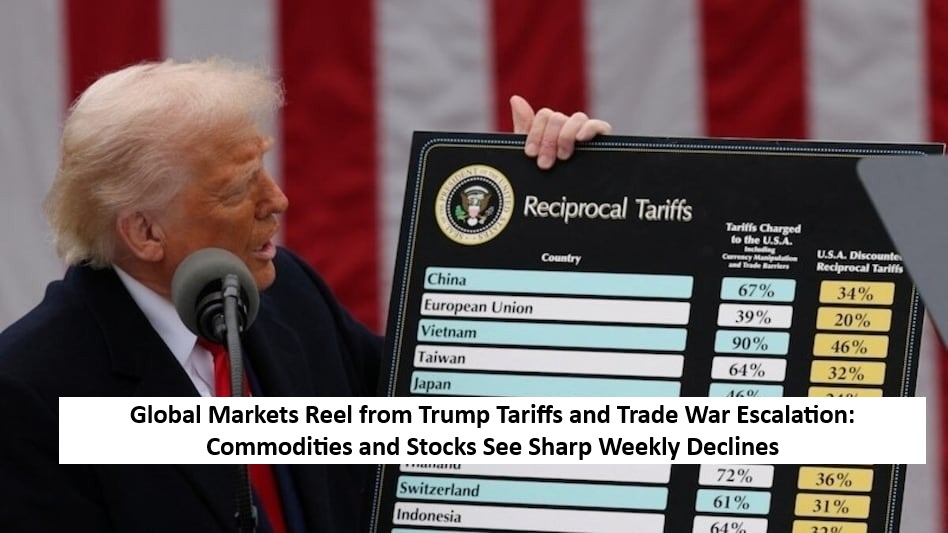
Markets worldwide suffered steep losses during the week ending April 4, as new tariffs imposed by former President Donald Trump escalated trade tensions and raised the specter of a global recession. The selloff intensified on Friday, driven by China’s retaliatory tariffs and export controls on rare earth elements, which heightened fears of a prolonged economic conflict between the US and China.
Commodities Crash Amid Risk-Off Sentiment
The biggest casualties were in the commodities sector:
Copper and crude oil each fell over 5% on Friday alone, ending the week with losses exceeding 10%.
Silver plunged more than 14%, marking the worst weekly performance among non-agricultural commodities.
Gold also declined, forming a Bearish Engulfing pattern on the MCX weekly chart, signaling continued downside potential.
Gold Technical Outlook (MCX):
Closed below 20 EMA and Supertrend (7,3) on the daily chart
Support levels: ₹86,200, then ₹84,800 per 10 grams
Resistance levels: ₹90,000 and ₹91,500
Copper, meanwhile, posted its worst weekly loss since September 2022, amid signs of weakening global industrial demand and an economic slowdown.
Wall Street Suffers Worst Weekly Decline Since COVID Crisis
US stock markets were equally hard-hit. The Dow, S&P 500, and Nasdaq all posted 8–10% weekly losses, marking their worst performances since the early days of the COVID-19 pandemic. Investor confidence took a blow after Trump announced a 10% tariff on all imports, with much steeper rates for China (54%) and the European Union (20%).
China retaliated with its own tariffs, including a 34% duty on US imports, further stoking fears of a full-blown trade war.
Dollar Recovers Slightly After a Sharp Drop
The US Dollar Index recovered to near 103 on Friday after touching a five-month low of 101.26, capping the weekly decline at 1%. The bounce followed comments from Federal Reserve Chair Jerome Powell, who warned of inflation risks due to increased tariffs but signaled a cautious approach to interest rate policy.
Mixed US Jobs Data Keeps Traders Focused on Inflation
The US March jobs report showed 228,000 jobs added, beating expectations. However, the unemployment rate edged up to 4.2%. With trade tensions dominating headlines, markets now await:
US inflation data
Consumer sentiment surveys
Inflation expectations reports
These figures will likely shape the Fed’s next move, although geopolitical risks and trade disruptions may overshadow economic indicators in the near term.

 Share
Share_259863270_100x75.jpg)



